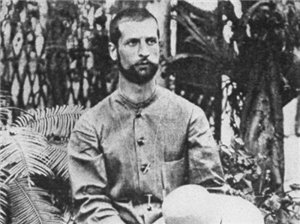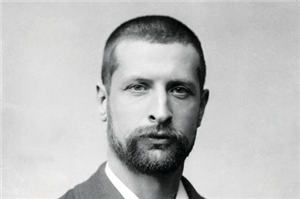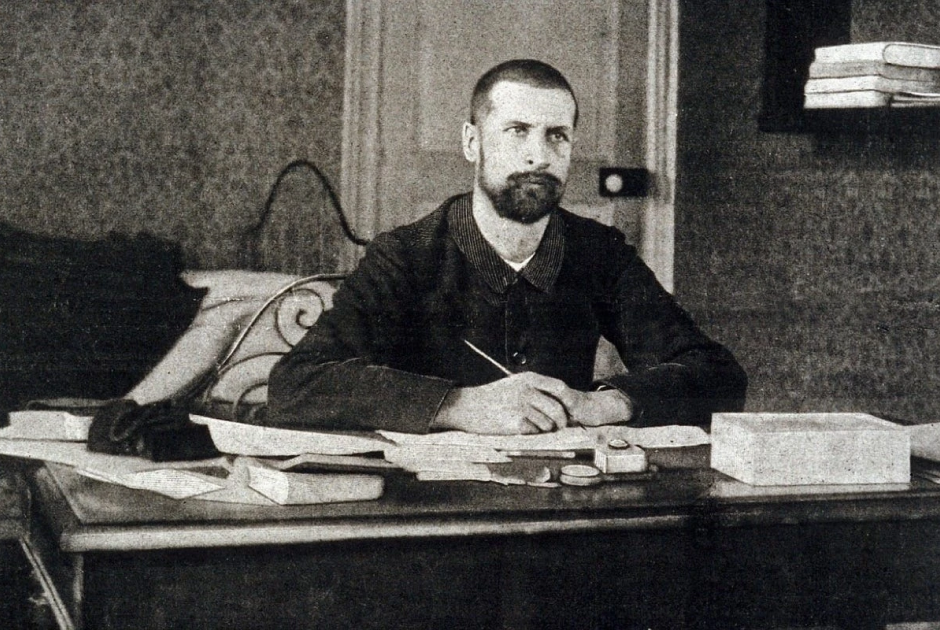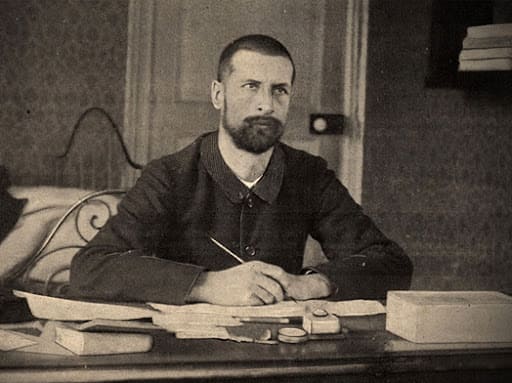Speaking of Doctor A.Yersin, every Nha Trang resident always feels proud. He is a great scientist of humanity and an outstanding citizen of Nha Trang.
Nha Trang – second homeland
Dr. A. Yersin was born on September 22, 1863 in Switzerland. In 1888, he became a French citizen and passed the medical exam in Paris. In 1891, he arrived in Nha Trang and spent nearly half a century living and working here until his death (March 1, 1943). The years he chose Nha Trang as his second hometown were also the time that marked his career as a great scientist of humanity, as well as his great contributions to the Vietnamese people. .

More than 120 years ago, Nha Trang was still a wild land, surrounded by dense forests, wild animals, and sparse population. Fishing villages are scattered along the coast, the largest population is still the current Xom Con area. One day at the end of March 1891, on this land a strange Western man appeared, that was A.Yersin. Being a person with a passion for exploration, after traveling a long way from France to many countries around the world, he decided to stop here. What kept young Yersin from staying in this poor fishing village? It is probably the beautiful natural scenery with amazing mountain and river landscapes, and suitable weather and climate for his research work. The luggage he brought with him was a medical degree and experience working with scientist Louis Pasteur; Emile Roux and the enthusiasm of youth with the thought “when people are young, it seems like there is nothing they can’t do”.
He laid the foundation for Western medicine in Vietnam
Coming to Nha Trang, he built a small house as the first microbiology research and experiment facility in Vietnam. In 1893, the plague broke out throughout the Far East, Yersin decided to go straight to Hong Kong to research. In June 1894, Dr. Yersin succeeded in finding the plague germ and the world named it Yersinina Pestis (the germ named after him). Returning to Vietnam, Dr. Yersin collaborated with Dr. Calmette (founder of the first branch of the Paris Pasteur Institute in Saigon) to establish a laboratory in August 1895, the predecessor of the Pasteur Institute Nha Trang.
According to Professor Nguyen Thi The Tram – former Director of the Pasteur Institute of Nha Trang, President of the Yersin Admiration Association: “Dr. Yersin’s working means were truly modest at first. A house made of temporary materials, about 20 horses to make serum and only one veterinary doctor.” In the early days, his laboratory faced many difficulties when veterinary doctor Pescas passed away, and many horses used to produce serum also died from an unknown disease. But Yersin was not discouraged, he continued to upgrade his laboratory and aimed to establish a branch in the current Suoi Dau area. From raising cows and horses to exploiting medicinal plants, he turned his laboratory into a multi-purpose facility. From then on, it gradually developed into Nha Trang Pasteur Institute. “In the early days, Nha Trang Pasteur Institute had a special tendency to specialize in research on infectious diseases of livestock, how to prevent and treat them,” said Professor Nguyen Thi The Tram.

Since founding the Pasteur Institute in Nha Trang, he has contributed to the establishment of Pasteur Institutes in Hanoi, Da Lat, and managed the system of Pasteur Institutes in Indochina. Dr. Yersin was also the founder of Indochina Medical School (predecessor of Hanoi Medical University) on February 27, 1902 and was the first principal of the school. With the mind and vision of a scientist, at that time, Dr. Yersin overcame the plots of the colonial government so that this training facility could have comprehensive development. He let students study all basic subjects to gradually improve their knowledge of the West, not according to the government’s intention of teaching purely medical subjects. Students of the Indochina Medical School wear ivory badges when going to school like court officials. He built the school’s regulations to be equivalent to the regulations at the Paris Medical School. The school’s excellent students are sent to France to take the BS exam to challenge French students. Thanks to that, Vietnam has many talented doctors such as: Ho Dac Di, Dang Van Ngu, Ton That Tung… These are the foundations to build a developed Western medicine in Vietnam as it is today. now.
Pioneer in growing rubber trees and acclimatizing cinchona trees
In 1895, Dr. Yersin established Suoi Dau livestock farm (Cam Lam district). Here, he tried growing many different types of trees, but was only truly conquered by the rubber tree. In 1897, he planted the first 200 rubber trees on his plantation and quickly saw the promise of this tree. In a letter sent to Emile Roux in France, he affirmed: “I am convinced that the rubber tree is now the best growing tree on our plantation… I wish, a mature rubber tree for above 1kg of dry latex per year and each hectare has a minimum of 400 trees. The reason Yersin is said to be the first to grow rubber trees is that in addition to successfully growing rubber trees in Suoi Dau for high productivity and latex quality, he also has a close connection between the plantation and the departments. laboratories and rubber consuming companies. Thanks to that, after more than a century of presence in Vietnam, rubber trees are one of the industrial crops that bring in great revenue.

With the quinquina plant, before it was imported by Dr. Yersin and planted in the South, Governor General of Indochina Paul Bert also experimented with planting it in the North in 1886, but without success. Dr. Yersin himself knew that introducing cinchona would be very beneficial to the people of Indochina and some other colonies, but his initial experiments did not receive positive results. With the desire to plant cinchona trees in Vietnam, he worked hard to find land suitable for its growth habits and as a result, Yersin found Hon Ba (Cam Lam district) at an altitude of 1,500m. The seeds and 30 grafted cinchona trees were quickly brought from Buitenzorg botanical garden (France) to be planted in Hon Ba. At first, the grafted trees did not grow well, but the seeded trees grew well. However, the growth rate of all trees gradually slowed down, and the leaves became infected with mold. Not discouraged, he decided to move the experiment to Dong Nai Thuong area (Lam Dong). As a result, cinchona trees have grown well in this land.
It can be said that proactively growing cinchona trees also means proactively obtaining a source of crystallized quinine sulfate used to prepare anti-malaria drugs, a common disease in Vietnam for a long time. This shows that Dr. Yersin’s contribution to Vietnamese agriculture and medicine is enormous.
Nhan Tam







